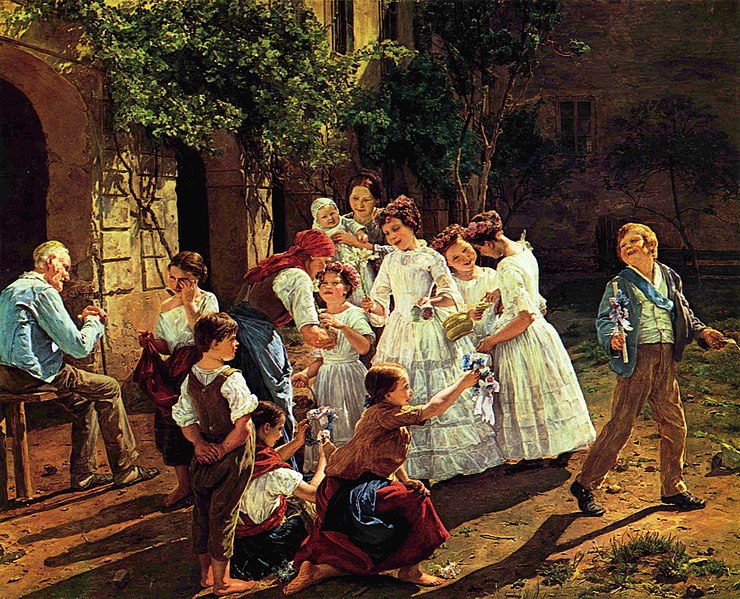Goethe once wrote, "Biedermeier led a double life," speaking the nearly paradoxical admiration of a home-centric urban middle class lifestyle as well as the nostalgic longing for return to a simple, pastoral lifestyle steeped in faith and tradition.
The term Biedermeier stems from a parodic pseudonym Herr Gottlieb Beidermeier used by at least two writers from the era to publish poems satirizing the increasingly apolitical middle class. In the words of Nicholas Parsons, Herr Biedermeier was portrayed as a "mildly philistine family man of modest ambitions and sober pleasures".Works penned under Biedermaier's name were published in the Munich-based periodical Fliegenden Blättern, but the term was eventually used to describe the era's cultural stagnation. The strict censorship of the period ensured that most writers avoided political topics, favoring instead subjects that often focused on country life or historical fiction.
The Biedermeier sensibility present in Austria between 1815 and 1848 can be reasonably compared to the Mayfield sensibility pesent in American culture in the 1950s and 1960s characteristic in television programming such as Leave it to Beaver.
The Vienna Museum on Karlsplatz as well as the Upper Belvedere have impressive collections of Biedermeier paintings and furniture. An online gallery exhibiting part of the Belvedere's Biedermeier collection can be found here.
 |
| Am Fronleichnamsmorgen by Ferdinand Georg Waldmüller |
No comments:
Post a Comment